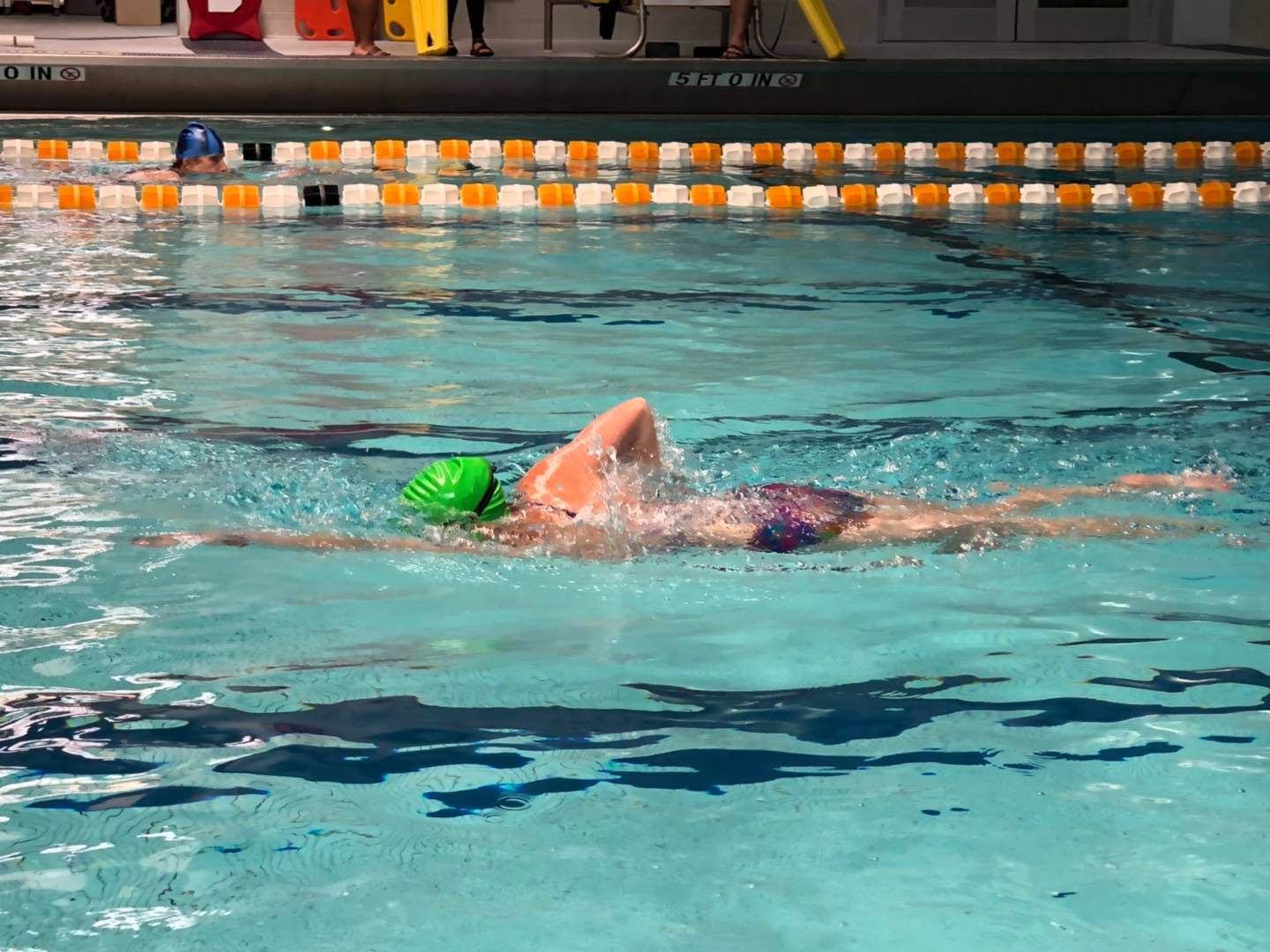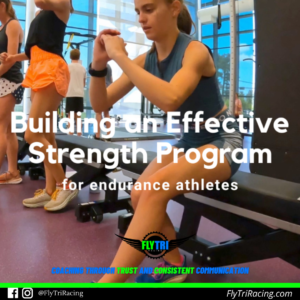
Important Drills to Improve Your Front Crawl Stroke
BY GINA RYMAL
As seen in TrainingPeaks. Each phase of the front crawl stroke requires precise body mechanics to optimize speed and power. Here’s how you can nail them.
Drills are designed to help build or focus on a particular segment of a swim stroke. That work is then transferred to swimming the full stroke. Most drills exaggerate a particular skill and do not necessarily reflect how the stroke should be performed as much as they give the swimmer the feel of proper stroke mechanics. Swimmers need a good mix of drill work, speed work, and distance swimming to become efficient over time. Swimming drills are unique to each swimmer and should be used to correct individual form and technique in order to become a better, more economical swimmer.
Catch Phase Drills
Drills to help improve the catch phase of the front crawl stroke — the most common and fastest stroke for triathletes and open water swimmers — work on the stage of the stroke underwater from the entry point to the power phase. Ideally, your fingertips should enter first (or thumb angled down by about 30 degrees), about halfway between your head and full-extension, in front of the shoulder. Tense your muscles and push the water towards your toes; this is the part of the stroke that provides propulsion.
A drill that strengthens this portion of the stroke is the Fist Drill, by which you can increase your feel for the water with your forearm, build strong wrist stability, and have a high elbow exit. While swimming front crawl, keep a closed fist the entire time. If that is too easy or if it is tempting to open up your hands, try clenching tennis balls while you swim. This also works on core stability since the tennis balls offer a bit of buoyancy. The tighter your fist is, the more engaged your forearm muscles will be; just don’t hold your fist too tight or it will begin to cramp. Keep your fist under your elbow while reaching forward to start the next stroke. Practice using your whole arm for movement, not just the palm of your hand.
Power Phase Drills
To improve the power phase — the portion of the stroke from about the chest to the exit point — swimmers need drills that maximize strength and force propulsion through the water. A good drill for this is the Sling Shot Drill, where the swimmer attempts to throw water out of the pool behind them with a flat open palm facing towards the water’s surface. You should tense up your muscles as you pass through the water and sling water behind you at your hip, with your thumb just grazing past your hip bone, as your arm exits the water. A good method is to be tense underwater and relaxed above water so that it feels like your arm could pop out of the water.
Recovery Phase Drills
The recovery phase is the portion of the stroke from exit to re-entry and is an important part of the stroke even though it doesn’t move you forward. The swimmer should be relaxed and loose to allow for a quick recovery but should still be preparing the body for entry. Your personal level of flexibility will dictate the shoulder rotation; however, you should aim to plunge your fingertips in first — like a hot knife in butter versus a smack on top of the water — with your elbow tall in the air. Swim coaches teach both the straight-arm recovery, which helps with torso rotation, clearing waves, and maintaining a full-length stroke under the water; and the high-elbow recovery, where the body stays compact and streamline and keeps less force on the shoulder as it circles the joint. Both are viable options and you should pick the one that works best for your shoulder comfort and swimming goals.
Either way, this is the part of the stroke from when the hand exits the water (ideally right beside the hip) to the point it re-enters the water (ideally extended 50-85% directly in front of the shoulder) with loose muscles and a floppy wrist. Your elbow should be pointed up and your hand should stay under your elbow while reaching forward, so that it enters the water in front of your shoulders. A good drill to use to develop the recovery phase is the Superman Drill. In this drill, you front crawl as normal except every time your arm extends straight out you should over-rotate and hold a “superman pose” with one arm forward and one arm at your side for about two seconds before finishing the stroke. Repeat for each arm. Novice swimmers may find they’ll need to do a regular stroke in order to breathe.
Kicking Drills
Of course, the front crawl stroke is more than just sequential arm movement. The swimmer must also have a strong kick for balance, rotational assistance, and to keep horizontal in the water. Preferably, the swimmer has a fast, shallow kick at about six beats per stroke, and the kick follows the hips as they rotate with the torso. The legs should be long and the feet pointed at the ankles. Kicking is used for balance and body position but when used properly it is a great propulsion tool.
To improve your kick, push the water down but equally pull the water up with your whole leg as if your lower body could move like a whip. Your hamstrings and quads should not burn individually but should feel equally used. Always keep your ankles floppy and loose. They should be slightly pointed to elongate your leg, but do not over-exaggerate a pointed toe and become stiff in the ankle, cramp the toe box, or cramp the calves. Kick rhythmically and continuously; your kick should be just under the surface of the water with your whole body nice and tall but still submerged. If you hear splashing, you aren’t getting the most return for your effort since the air does not provide any resistance.
The Six-Kix Switch is a common drill to improve the coordination of the kick, torso extension, and bi-lateral breathing. While using a kickboard, kick six times in the prone (belly-down) position, six times on the right side, six times prone again, and six times on the left side. To keep your kick smooth, try to keep your legs parallel and kick just underneath the water. As the drill gets easier, you can replace the kickboard with front crawl strokes as long as you keep emphasizing the prone-side-prone-side pattern.
Dry-Land Tips
If you don’t have a pool that’s easily accessible, dry-land and strength workouts can be effective at maintaining swim form and stamina. Exercises like burpees, jump lunges, leg lifts, leg curls, planks, squats, push-ups, pull-ups, and donkey kicks are all great at building the muscles that are used for swimming and building cardiovascular endurance. Always focus on core stability and muscle engagement before adding any weight; modify as needed to meet your individual level of flexibility and range of motion; and do not push past painful movement.
Improvement takes time. While there are many other drills you can use to achieve faster race times, most swimmers will find that targeting each aspect of the front crawl stroke will improve their biomechanics and technique.
Improvement takes time. While there are many other drills you can use to achieve faster race times, most swimmers will find that targeting each aspect of the front crawl stroke will improve their biomechanics and technique. Adding pool equipment, dry-land strength work, and overall time in the pool will inevitably help you improve. Stay consistent — getting in at least two decent swim sessions per week will maintain your current ability, but three sessions per week will help you break through to the next level.
Next time you are at the pool, try giving these drills a chance to help you improve. Don’t overthink them. Stick with one drill until it feels natural, and then add in the next drill on top of that. Control your breathing and coordination until the stroke feels natural and fluid. Novice and advanced swimmers alike can benefit from drills as they can correct problems and help you maintain good form, both in your training and on race day.

ABOUT GINA RYMAL
Gina Rymal, from Tyler Texas, is a Triathlon and Swim Coach at Fly Tri Racing. She is a TrainingPeaks Level 1, USA Cycling, and USMS Level 2 Swim Coach. As a coach she loves helping people find their finish lines and helping work through the mentally and physically hard parts of training to meet their goals. She has coached many people through their first triathlons, swimming goals, and cycling events. To learn more about Rymal and personal coaching visit www.flytriracing.com.



